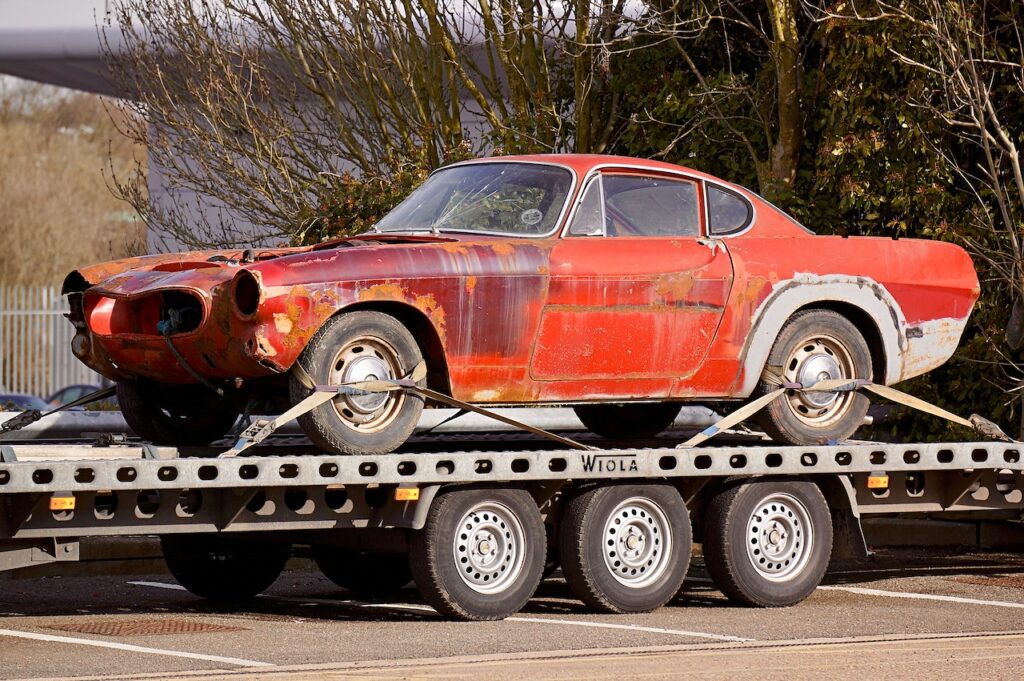Table of Contents
ToggleCan You Get Pulled Over for Driving a Damaged Car
Driving a damaged car can raise concerns about safety and the possibility of getting pulled over by law enforcement. The question arises: can you get pulled over for driving a damaged car? The answer is not as straightforward as one might think.
In general, traffic laws require vehicles to be in proper working condition, including having all necessary equipment, such as lights and mirrors, in good working order. If your car’s damage compromises its functionality or poses a safety hazard, it could potentially lead to being pulled over by the police.
However, whether you will actually get pulled over depends on various factors such as the severity of the damage, specific state regulations, and how noticeable the damage is. Minor cosmetic issues like small dents or scratches may not typically attract much attention from law enforcement unless they obstruct visibility or violate any specific regulations.
Understanding the Legal Requirements for Vehicle Condition
When it comes to driving a damaged car, you may be wondering if you can get pulled over. The answer to that question depends on the specific laws and regulations in your jurisdiction. However, it’s important to understand the general legal requirements for vehicle condition to ensure you stay on the right side of the law.
Here are some key points to consider:
- Functional Lights: One of the basic requirements for a vehicle is having functional lights. This includes headlights, brake lights, turn signals, and taillights. If any of these lights are not working properly or are damaged, you could potentially face a traffic violation.
- Windshield and Windows: A cracked or severely damaged windshield can obstruct your view while driving, posing a safety hazard. Most jurisdictions have regulations regarding the condition of windshields and windows, requiring them to be free from significant cracks or other impairments.
- Tires: The condition of your tires is crucial for road safety. Balding or excessively worn tires can compromise traction and handling, increasing the risk of accidents. It’s important to regularly check your tire tread depth and ensure they meet minimum legal requirements.
- Body Damage: While minor cosmetic damage may not attract much attention from law enforcement officers, extensive body damage that affects vehicle functionality might raise concerns about safety hazards on the road. It’s always advisable to repair substantial damage promptly.
- License Plates and Registration Stickers: Ensuring that your license plates and registration stickers are up-to-date and clearly visible is another legal requirement in many jurisdictions. Faded or illegible plates/stickers can lead to fines or even being pulled over by law enforcement.
Remember that these requirements may vary depending on where you live, so it’s essential to familiarize yourself with local laws and regulations specific to vehicle condition.
It’s worth noting that even if driving a damaged car doesn’t result in an immediate pull-over, you may still face consequences if it is deemed to pose a risk to yourself or others on the road. Additionally, neglecting necessary repairs and maintenance can lead to more significant issues down the line.

How to Prevent Getting Pulled Over for Driving a Damaged Car
When it comes to driving a damaged car, there are certain precautions you can take to reduce the chances of getting pulled over by law enforcement. Here are some tips that can help you avoid any unwanted attention on the road:
- Regular Maintenance: One of the best ways to prevent being pulled over for driving a damaged car is to prioritize regular maintenance and repairs. Keep up with scheduled service appointments, address any mechanical issues promptly, and ensure that your vehicle is in good working condition.
- Exterior Appearance: A vehicle with visible damage can attract attention from law enforcement officers. Take care of any dents, scratches, or broken lights as soon as possible. Keeping your car clean and presentable also goes a long way in avoiding unnecessary scrutiny.
- Functional Safety Features: Ensure that all safety features of your vehicle are functioning properly. This includes headlights, brake lights, turn signals, mirrors, windshield wipers, and horn. Faulty safety features not only increase the risk of accidents but may also catch the attention of police officers.
- Valid Registration and Insurance: Make sure your registration and insurance documents are up-to-date and easily accessible within your vehicle. Having current paperwork readily available demonstrates responsible ownership and decreases the likelihood of being stopped for administrative reasons.
- Be Mindful of Traffic Laws: Obeying traffic laws is crucial when driving any vehicle, but especially one that has visible damage or mechanical issues. Follow speed limits, use turn signals appropriately, come to complete stops at stop signs, and yield right-of-way when required.
By following these preventative measures consistently, you can minimize the chances of getting pulled over while driving a damaged car. Remember that maintaining your vehicle’s overall condition not only helps you stay safe on the road but also ensures compliance with legal requirements.

